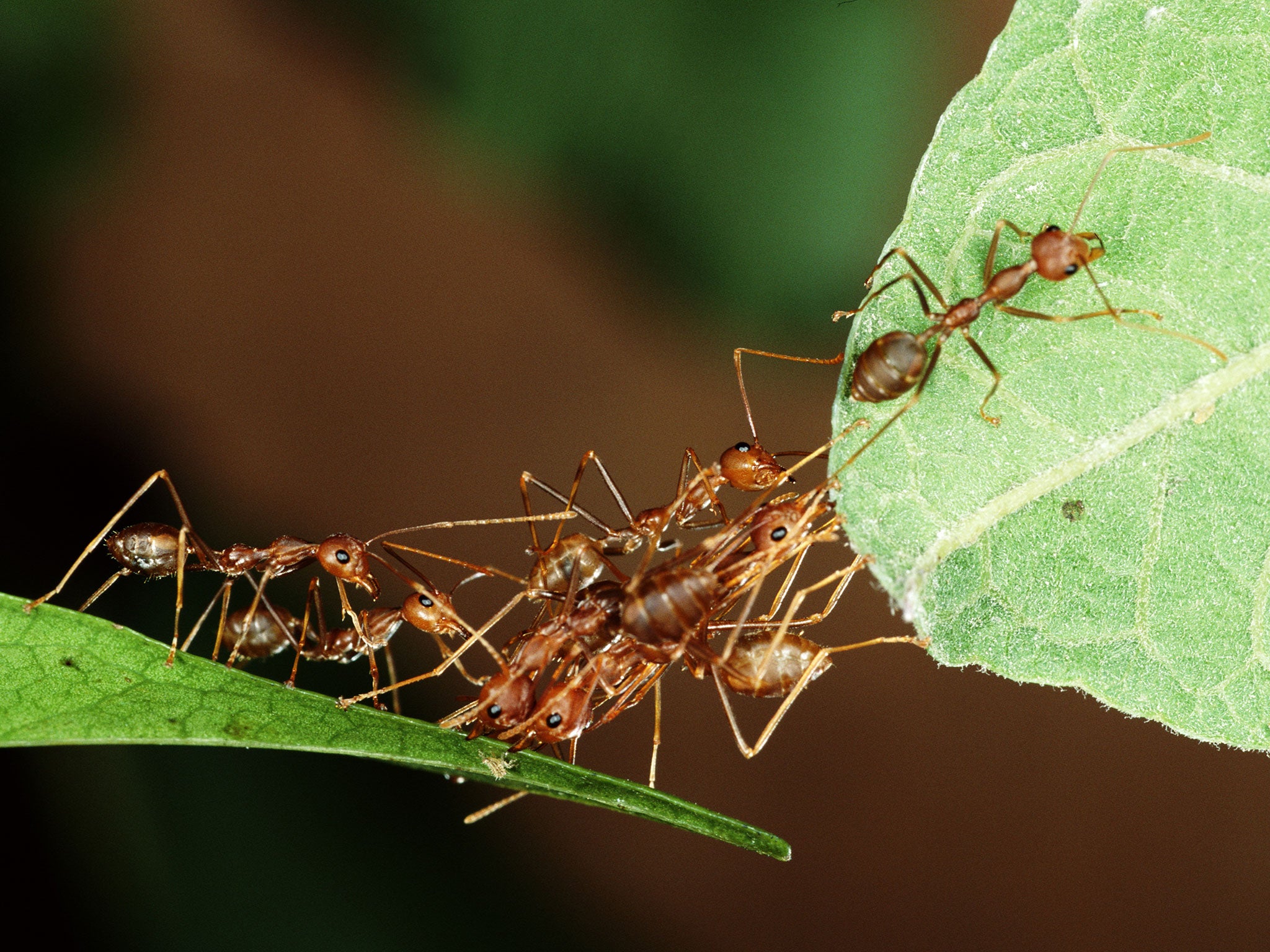Farmers in tropical forests are training ants to kill off bigger pests
Study says European farmers could do more to use this low-cost option

Your support helps us to tell the story
From reproductive rights to climate change to Big Tech, The Independent is on the ground when the story is developing. Whether it's investigating the financials of Elon Musk's pro-Trump PAC or producing our latest documentary, 'The A Word', which shines a light on the American women fighting for reproductive rights, we know how important it is to parse out the facts from the messaging.
At such a critical moment in US history, we need reporters on the ground. Your donation allows us to keep sending journalists to speak to both sides of the story.
The Independent is trusted by Americans across the entire political spectrum. And unlike many other quality news outlets, we choose not to lock Americans out of our reporting and analysis with paywalls. We believe quality journalism should be available to everyone, paid for by those who can afford it.
Your support makes all the difference.Farmers who have harnessed the collective power of the humble ant have proved more successful at controlling the pests that ravage their crops than those using chemicals, according to new research.
Armed only with the most rudimentary equipment, farmers in tropical forests have caught, cultivated and trained colonies of ants to patrol tropical forests to kill off bigger pests – with remarkable results, according to a review of 70 studies on ants.
The studies – in Asia, Africa and Australia – suggest that European farmers could do more to use this low-cost option, a paper published today in the Journal of Applied Ecology said today.
“Ants are great hunters and they work cooperatively. When an ant finds its prey, it uses pheromones to summon help from other ants in the nest,” said the paper’s author Dr Joachim Offenberg, of Aarhus University. “By working together, they can subdue even large pests.”
A study of cashew nut crops in Australia found “pest control by ant” was nearly 50 per cent more successful than if the farmer used conventional pesticides. The quality of the crop was also higher, leading to a 71 per cent increase in income, the study found.
In other cases, farmers were able to mount effective defences against pests by hanging ant nests from carrier bags from trees in a tropical forest and feeding the colony sugar solution to help it to develop. The farmers then hooked up string between the trees to create a successful defence system, with a network of ant aerial walkways in the forest canopy at minimal cost.
Apart from that, a little careful husbandry – including pruning trees to ensure rival colonies of weaver ants did not fight – and watering in the dry season would lead to all-year-round protection. Studies of 50 pest species showed that ants protected crops, including cocoa, citrus and palm oil, at least as efficiently as chemicals, the paper found.
Dr Offenberg, who has studied ants for almost 20 years, has suggested Europe could learn something from this and apple growers could save money by using wood ants to tackle winter moths.
“Although these [examples in Asia, Africa and Australia] are rare cases where ants were superior to chemicals, many studies show ants are just as efficient as chemical controls,” he said. “And, of course, ant technology is much cheaper than chemical pest control.”
Ants live on every continent except Antarctica, with some estimates suggesting that the mass of all ants on Earth is similar to that of humans. Their cooperative working means that they act as super-organisms, and a single colony can weigh several kilogrammes.
“Weaver ants need a canopy for their nests, so they are limited to plantations and forestry in the tropics,” said Dr Offenberg. “But ground-living ants can be used in crops such as maize and sugar cane. European wood ants are renowned for controlling pests in forestry, and new projects are trying to use wood ants to control winter moths in apple orchards.”
Join our commenting forum
Join thought-provoking conversations, follow other Independent readers and see their replies
Comments